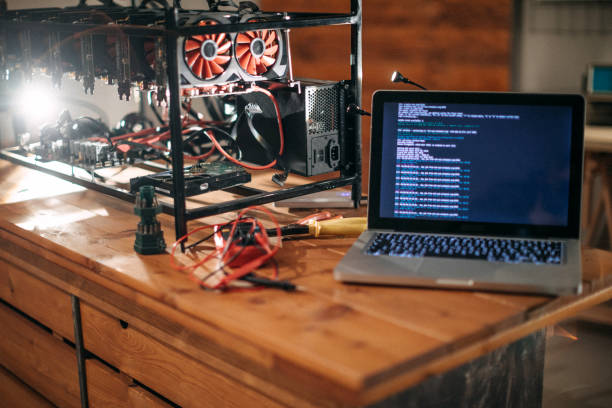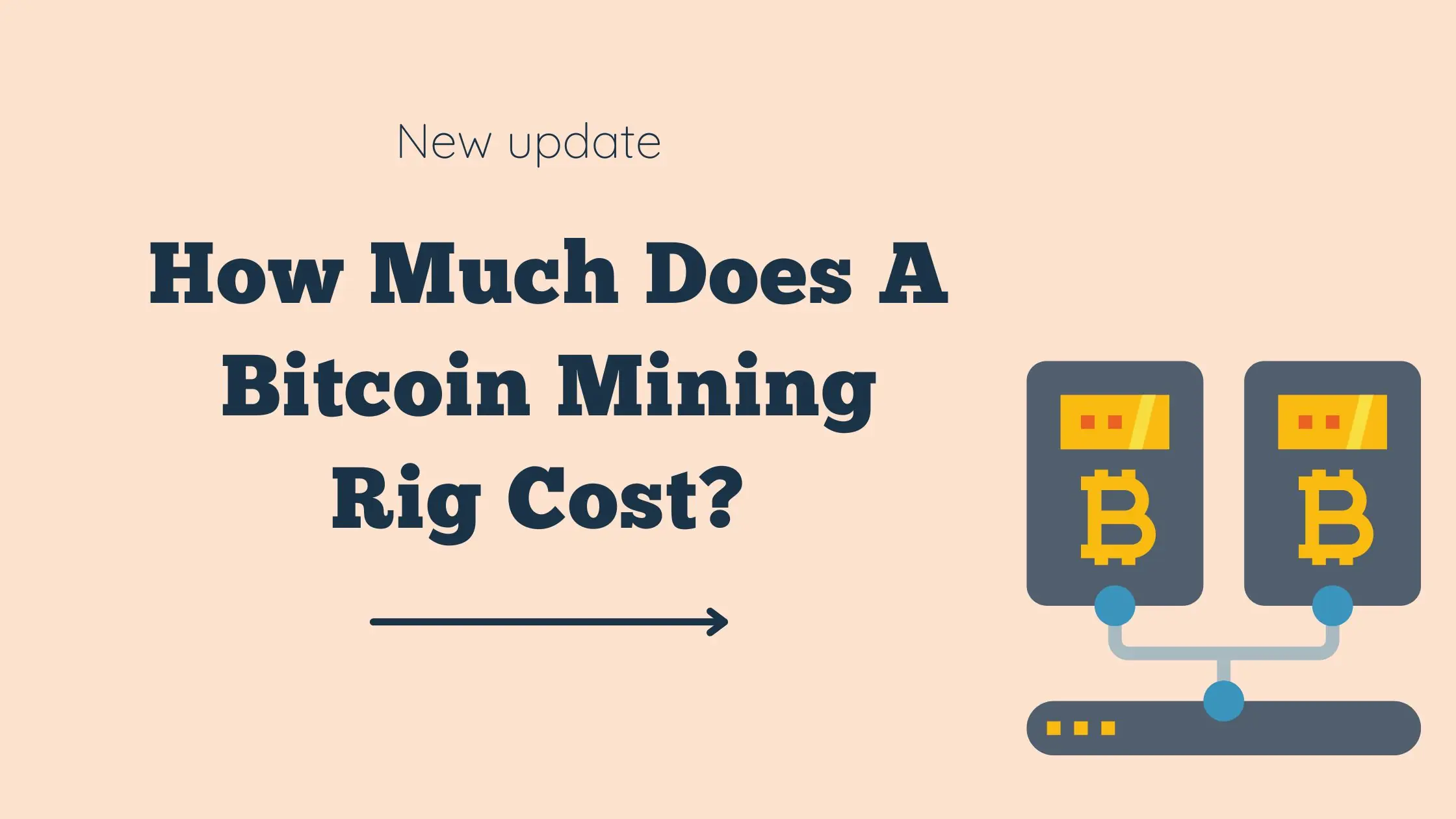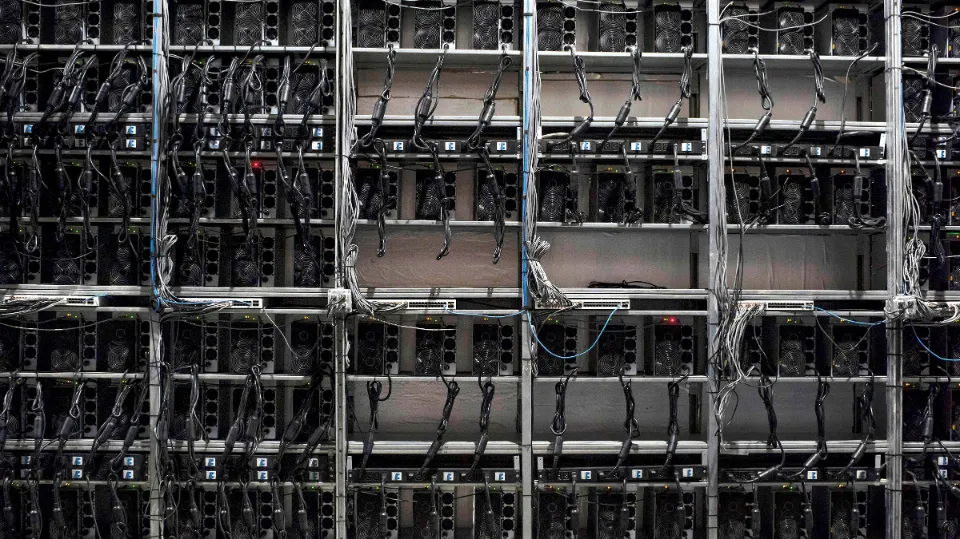Bitcoin and other cryptocurrencies are mined annually for billions of dollars by a variety of miners, from small home miners to major publicly traded companies. More and more people get interested in bitcoin mining. So how much does a bitcoin mining rig cost?
Between $2,000 and $20,000 is the typical price range for a Bitcoin mining rig. That is a wide range and does not fully convey the caliber of the product.
If someone can learn how to manage a mining operation, mining can be a very lucrative business, even for (non-technical) people. Everything you need to know about mining rigs is covered in this article.
What is a Mining Rig?
A computer specifically designed for mining cryptocurrencies is known as a mining rig. A cryptocurrency that employs a Proof-of-Work (POW) algorithm requires the assistance of miners to process transactions and secure the network. To be the first to produce a new block of transactions that can be added to the blockchain, a mining rig continuously performs hash operations.
Out of all PoW-based cryptocurrencies, Bitcoin is mined using mining rigs the most frequently because it has over 99% of the market share in computing power backing it. The hash rate is not directly transferable between all of these cryptocurrencies due to the fact that some of them employ different hashing algorithms. The graph does demonstrate the level of competition present in Bitcoin mining when compared to that of other cryptocurrencies.
The average mining rig has dozens of parts and hundreds of chips. All of these are set up to mine cryptocurrencies as efficiently as possible.
How Much Does a Bitcoin Mining Rig Cost?
Between $2,000 and $20,000 is the typical price range for a Bitcoin mining rig. That is a wide range and does not fully convey the caliber of the product.
It’s critical to realize that there are other considerations to take into account when purchasing a miner other than just the rig’s price. For the money they spend, an operator wants to operate miners that are as efficient as possible.

Types of Mining Rigs
CPU Miner
The CPU (Central Processing Unit), which is a component of every personal computer, is where mining starts. This particular type of miner was the only one available in the early days of Bitcoin. On the other hand, computers are versatile tools. They are not tuned for any particular kind of calculation to be as energy-efficient as possible. The fact that mining from a personal computer is no longer profitable is frequently mentioned because as mining competition increased, CPUs quickly became outclassed.
GPU Miner
Specifically designed to mine cryptocurrencies, a GPU mining rig is a computer. It can appear to be a typical personal computer, but it typically has a number of GPUs (Graphics Processing Units) connected to its motherboard. It, therefore, has a lot more mining power than a CPU. A 332% increase in efficiency over CPU miners was introduced with the first GPU mining rigs in 2009.
GPUs are not made specifically for mining cryptocurrencies. They are used in many different applications, such as machine learning, rendering for graphics and video, and gaming.
Nvidia, Asus, MSI, and AMD are some of the most well-known GPU producers. Nvidia’s GeForce RTX 3060 Ti and GeForce 3090, AMD’s RX 6700 XT, and Radeon RX 580 are some of the GPUs that are used most frequently for mining.
FPGA Miner
An electronic circuit that can be programmed to carry out particular operations is known as an FPGA (Field-Programmable Gate Array). Therefore, it can be programmed to mine one cryptocurrency initially, and then another later. Despite the fact that this process appears simple in theory, it is challenging in practice and uses more energy than ASIC miners do. This also explains why they are no longer heavily utilized for mining.
Compared to GPU miners, the first FPGA mining rigs from 2011 used 615% less energy.
ASIC Miner
The Application-Specific Integrated Circuit, or ASIC, is currently the most widely used mining rig. In contrast to the other processing units, this chip is made specifically for the application in question rather than for general use. Mining is one of these unique applications. An ASIC will have power efficiency that is far superior to other computers when it is designed with mining in mind. This renders it impossible to attempt to compete with ASIC mining rigs without using ASICs.
The initial ASIC mining rigs from 2013 used 460 percent less energy than FPGA miners.

How Long Does a Mining Rig Last?
There is a tendency for some miners to break down more frequently than others. For instance, the Antminer S17 and T17 had failure rates of 20–30% after a month. Some products from the same maker, like the Antminer S9, have operated dependably for more than 6 years. When comparing various models, it’s important to take a machine’s durability into account.
Beyond toughness, it’s also important to consider dependability and simplicity of use. Whatsminer is frequently praised for being a very dependable and simple-to-use miner, which is crucial for large-scale mining operations.
Buyers should conduct due diligence, keeping in mind that the majority of online voices tend to be critical ones.
Buy Or Build a Bitcoin Mining Rig?
The procedure for building a mining rig primarily applies to GPU mining rigs, which call for the acquisition, assembly, and configuration of a variety of components. More specialized knowledge is needed for this. Setting up a single GPU mining rig can take up to three hours, even for someone with extensive knowledge of the subject. The time would probably be multiplied by many for a beginner in mining.
However, since the ASIC machine is designed specifically for mining, it will work best right out of the box. Although there is no assembly required, starting a mining operation up and running still requires work.
Summary
Bitcoin mining rigs are specialized computers built specifically for cryptocurrency mining. A cryptocurrency that employs a Proof-of-Work algorithm requires the assistance of miners to process transactions and secure the network.
Bitcoin mining rigs come in a variety of designs, including CPU miners, GPU miners, and ASICs. These work best with various cryptocurrencies. A typical Bitcoin mining rig may cost between $2,000 and $20,000. The quality of the product cannot be fully understood by looking at such a broad range.
FAQ
How Long Does It Take to Mine 1 Full Bitcoin?
A solo miner might need around 10 minutes to mine one bitcoin with the current difficulty rate and much more sophisticated systems. However, the typical rate for the majority of miners is 30 days.
How Profitable is a Bitcoin Mining Rig?
Using a bitcoin mining calculator, you can look up the current profitability of bitcoin mining online. Bitcoin mining generated $3.39/TH/s at its highest point in 2017 when it was most active. It was more in the neighborhood of $0.104/TH per second by the end of the autumn in 2022.
How Hard is It to Mine 1 Bitcoin?
According to statistics, a single miner would need to contribute just over 0.11% of the total Bitcoin hash rate in order to produce 1 BTC every day. As we already mentioned, this is roughly 149.2 PH/s, or the output of 2,334 Antminer S17e mining units put together.
Is Bitcoin Mining Worth the Electricity?
Mining bitcoins today is hardly profitable. For the majority of miners, costs are too high and rewards are too meager. Mining profitability is under a lot of pressure due to the bear market in bitcoin.










